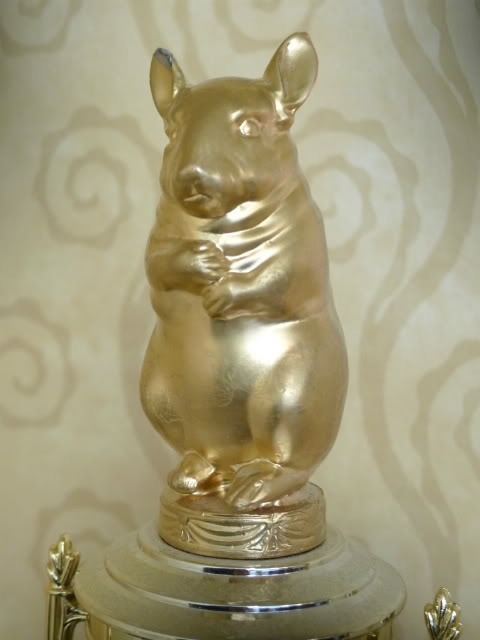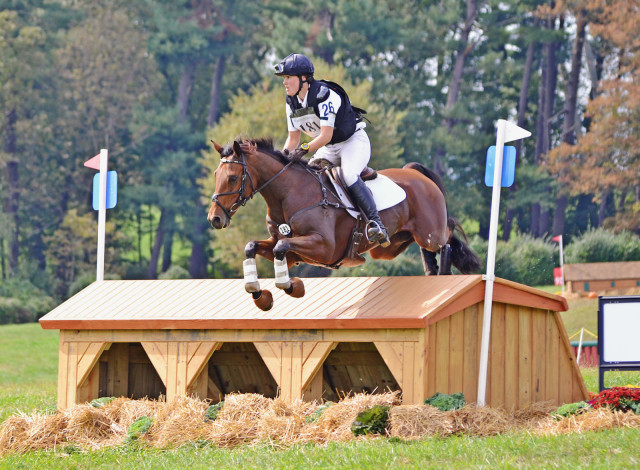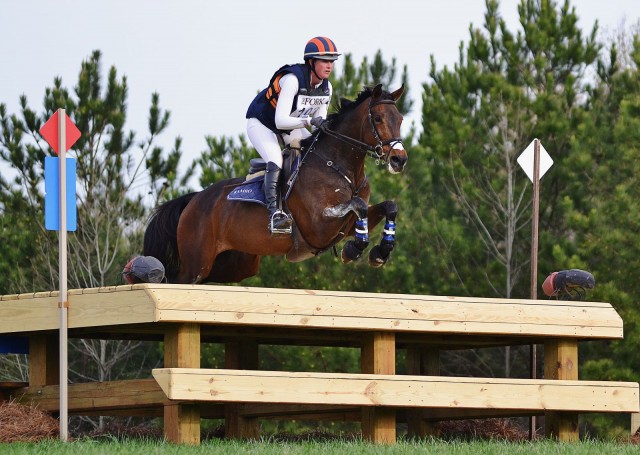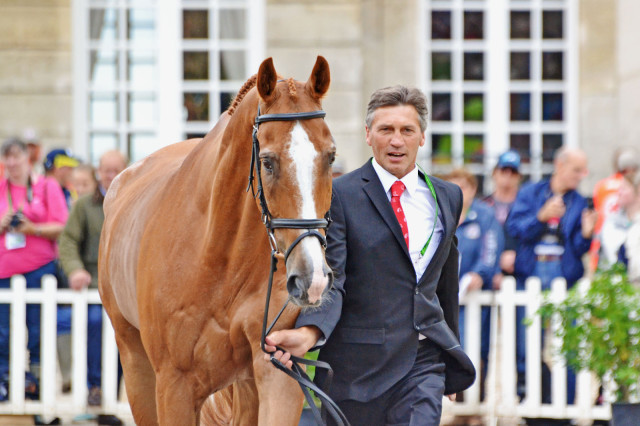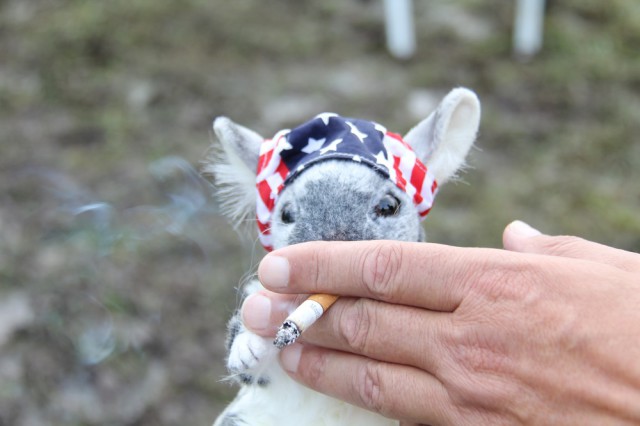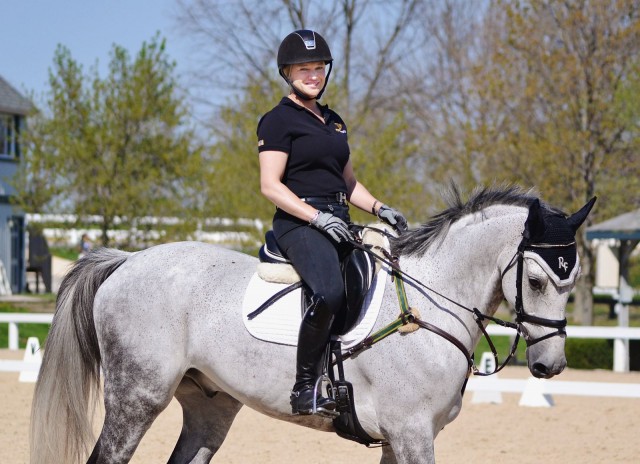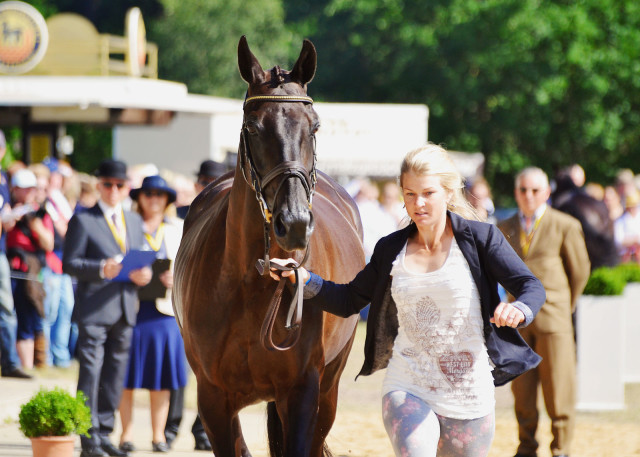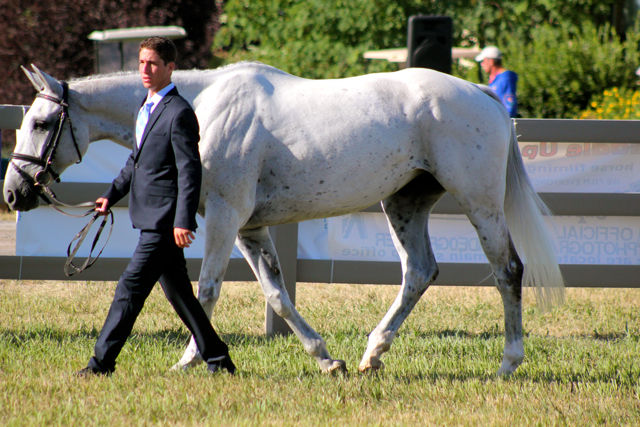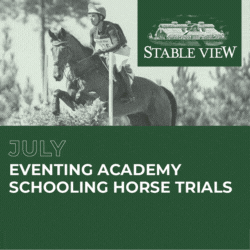It’s not every day you get to pick William Micklem’s brain about breeding, bloodlines and his take on the state of U.S. eventing as a whole. We’re running a three-part series in which William addresses these topics and more. Click here for Part 1 on the winning formula for his event horse breeding family and here for Part 2 on U.S. breeding. Many thanks to William for his time, and thanks for reading.

Boyd Martin and Shamwari 4 at WEG. Photo by Jenni Autry.
It’s no secret that 2014 sucked the wind out of Team USA’s sails. Having both stood in the arena at Great Meadow when 5,000 screaming fans sent our World Equestrian Games squad off to Normandy and schlepped back through the mud at Haras du Pin after a cross country day that just didn’t go our way, I think I speak for all of us when I say we wished for a very different outcome.
But a new year means new chances for Team USA, which continues in a rebuilding phase after new team coach David O’Connor took the reins from Capt. Mark Phillips in 2013. While we all dared to hope that winning a medal at WEG was attainable, the fact remains that David’s new program is still in its infancy, and there are no quick fixes in this sport.
But William Micklem believes there’s still plenty to be positive about as the U.S. endures these growing pains, and it’s a topic we focused heavily on for the third and final part of our interview series. He holds an extremely positive view of the state of U.S. eventing as a whole right now, emphasizing he doesn’t believe the team is truly struggling if you look at the big picture.
The Power of Positive Thinking
“It is always so easy to knock and be the harbinger of doom, yet these people need to look for the positives, because the simple truth is that negativity kills whereas positivity builds,” William said. “With regard to the U.S. team, there are huge positives, and it is no secret that all international coaches look at the U.S. job as the plumb job in the world because of these positives.”
From a morale standpoint, it’s invaluable for our riders to hear comments like that — especially from someone with an outside perspective who’s not from the U.S. — as they look to put the disappointment of 2014 behind them. It’s also one of the reasons I was so pleased to hear Leslie Law’s comments in his keynote speech at the USEA Convention last month, when he said the U.S. has all the resources to get back on the podium.
We should never underestimate the power of positive thinking. As William put it: “Positivity builds. It doesn’t mean that you sweep things under the carpet; it means you focus on the things you need to do as opposed to the things that went wrong. It will always bring more people on board, and you’ll always find it easier to bring progress if you think of the things you need to do.”
What Makes a Successful Program?
What does every successful program have at its core? After building positivity and confidence, the next natural step becomes cultivating talent and depth. Every successful National Federation needs elite riders at the helm, and while the U.S. is still working to build rider depth at the highest levels, William said that’s not a problem unique to American eventing.
“Much is written about the numbers of high level four-star riders in the UK, but they would have struggled over the past 20 years without the contribution of William Fox-Pitt, Tina Gifford and Pippa Funnell, and how would Germany have performed in the last six years without Michael Jung and Ingrid Klimke, or New Zealand without Mark Todd and Andrew Nicholson? As standards rise, this situation is the nature of elite sport as a whole.”
Think about the importance of these select few riders who have consistently helped their countries win medals. While depth is important too, finding and cultivating those few key riders who will anchor teams and consistently deliver scores that can win medals is just as critical, if not more so.
“There are very few riders who can consistently be competitive at the highest level on more than one horse, and yet this is what a team needs as its nucleus,” William said. “The coincidental coming together of the brilliant talents of Mike Plumb, Jimmy Wofford and Bruce Davidson was a significant factor in the golden period of USA eventing, and David and Karen O’Connor extended this period.”
Finding the Right Horses
With the U.S. looking to get back on the podium, riders like Phillip Dutton and now Boyd Martin are anchoring teams, and William believes Marilyn Little also has “a touch of genius and looks like she will shortly join this group,” he said. Once you find the right combination of riders who have what it takes to win medals, the next step is finding the right horses for the job.
“These riders have the skills to take a three-star or four-star horse and be competitive almost immediately, as Boyd did with Shamwari last year, Mary King did with Call Again Cavalier and Imperial Cavalier, Jimmy Wofford did with Kilkenny and Carawich, David O’Connor did with Wilton Fair and Custom Made and Karen O’Connor did with Shannon and Mr. Medicott,” William said.
And while the topic of whether to buy made horses or bring youngsters through the levels remains a hot button issue, William makes the valid point that sometimes the better longterm value can be buying a made horse, or at least one ready to compete at the three-star level. Despite the initial sticker shock of a made horse, riders that can produce the results that win medals need horses like that to get them there.
“Every effort should be made to develop syndicates for this special group of riders,” William said. But while syndicates have helped bring top four-star horses in the States in recent years, like Shamwari 4 and Mr. Medicott, the reality is not every rider can buy a made horse and deliver immediate success on the international stage.
Developing Partnerships
That’s where developing horses from a young age comes in. Riders like Michael Jung, Buck Davidson and Kim Severson have consistently shown how effective it can be to bring talented young horses through the levels, creating partnerships from the ground up with horses that exhibit all the signs of greatness.
“This is where a network of eyes and ears both in the U.S. and in Europe is invaluable to spot special young horses,” William said. “Arguably having someone with the ability to spot potentially great young horses is the best way to increase the likelihood of medals for the team. It is an often neglected or unsung area of expertise.”
William also believes the USEA’s Young Event Horse program plays an important role in evaluating and talent spotting potential team horses. Having served as a judge at both the East and West Coast Young Event Horse Championships last year, he weighed in more on the topic in our second interview in this series.
Securing the Future
Talent spotting riders is equally critical and one of the best ways to boost the chances of getting back on the podium, William said. With Leslie Law now overseeing the Eventing 25 and 18 programs and the USEF Eventing Selection Committee scouting for talent of all ages at events around the country, the tools are in place to find that next generation of talent.
“This is why David O’Connor’s young rider initiatives are so vital — in the same way that David himself was ‘spotted’ by Jack Le Goff. Combined with this is spotting and developing the really special once in a lifetime partnerships, as there will always be riders who hit the four-star high spots for a short time on one horse.”
In William’s experience, partnerships like this almost always come as a result of starting with a young horse, he said. Pairing the right young rider with the right young horse at the right time can produce that “coincidental coming together of talents” that launched the golden period of American eventing.
“Other horses, sometimes older and less talented, will be required for skill development, but these riders need the right young horse suited to their physique, personality and talents,” William said. “This in particular is where the involvement of a great coach and a great coaching system is needed and can make all the difference.”
The Psychology of Coaching
If the right riders and the right horses are the foundation of a successful program, then the right coach is the cornerstone. A coach dictates the mood and direction of a team, helping the riders develop both the physical and mental ability to win on the international stage.
“The core psychology job for a national coach is a coin trick. On the one side, it is about developing the riders’ belief in their ability, while the other side is about developing their hunger for improvement. So often these two work against each other as opposed to with each other,” William said.
“As the coach praises and compliments, the hunger for improvement is lost; as the coach keeps pushing for more and better, their self belief is lost. But the two can and will work together if the two are seen as one and the same thing. ‘You have the ability to improve.’ ‘Your belief will drive you forwards.’ ‘Go out and do it every day!'”
Is American eventing hovering on the verge of revival? Is the podium finally within reach? With a must-win scenario at this year’s Pan American Games in Toronto this coming summer and the next Olympic Games just 18 short months away, it’s time to start believing that Team USA can bring home medals once more.
“I think there is a cultural tendency in the U.S. to have ‘paralysis by analysis,’ but I saw enough shining eyes and committed hearts and legs to make me very optimistic about U.S. eventing,” William said. “You have some wonderful riders, lovely horses and a committed and talented national coach. The future is bright.”
We can’t thank William enough for his time in being interviewed for this three-part series; click here for Part 1 on the winning formula for his event horse breeding family and here for Part 2 on U.S. breeding. And we’re also thrilled to welcome him to the EN team as our newest guest blogger. If you missed his first column on EN, click here, and be on the lookout for much more from William!








